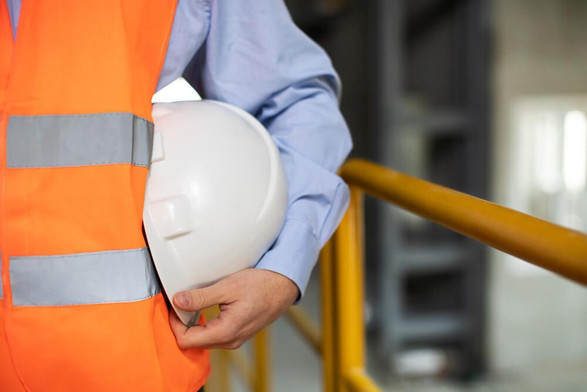Embarking on the journey of homeownership is a significant undertaking, and ensuring your home’s foundation is stable is paramount. Foundation stabilization involves the implementation of structural measures and techniques to prevent or remedy the subsidence or movement of a building’s foundation, securing its long-term stability and structural integrity.
In this guide, we will delve into the details of various indicators that may signal foundation instability. By gaining a deeper understanding of the signs, homeowners can proactively address concerns, safeguard their investment, and fortify the groundwork upon which their homes stand.
THE CRUCIAL ROLE OF EARLY DETECTION
Understanding the signs of foundation instability is not just about addressing apparent issues but about developing a keen awareness that allows homeowners to be proactive in preserving their property.
Cracks in Walls and Floors:
Cracks in walls and floors, although seemingly harmless, can be the first whispers of potential foundation issues. Pay attention to the complexities of crack patterns, sizes, and positions. Distinguish between superficial settling issues and more substantial structural considerations.
Identification: Thoroughly inspect the walls and floors for the presence of cracks. Different types of cracks, such as hairline cracks, vertical cracks, horizontal cracks, or stair-step cracks, may indicate different underlying issues.
Diagnosis: Understand the root cause of the cracks. Common factors include soil settlement, hydrostatic pressure, poor construction practices, or inadequate foundation design.
Repair Techniques:
Crack Filling: Small, non-structural cracks can be filled with epoxy or polyurethane injection to prevent further water infiltration and stabilize the area.
Mudjacking or Slab Jacking: For sunken or uneven floors due to soil settlement, injecting a mixture (mud or polyurethane foam) beneath the slab can lift and level it.
Underpinning: This involves strengthening the foundation by extending its depth or adding support, often through methods like helical piers or push piers.
Uneven or Sloping Floors:
The subtleties of uneven or sloping floors are an architectural tale often overlooked. Understanding the topography of your living space goes beyond aesthetics; it is an insight into your foundation’s well-being.
Addressing uneven or sloping floors is crucial for stabilizing a foundation. Here’s a guide on how to manage this issue:
Assessment: Begin by determining the extent and nature of the floor slope. Use a level to identify areas where the floor deviates from its horizontal position. Note the direction and severity of the slope.
Identify Causes: Uneven or sloping floors can result from various factors, including soil settlement, inadequate support, water damage, or structural issues. Identifying the specific cause is essential for developing an effective stabilization plan.
Understand Soil Conditions: Soil-related problems, such as expansive clay soil or poor compaction, can contribute to foundation movement. Addressing soil issues may involve moisture management, soil stabilization, or even underpinning.
Separation in Exterior Bricks:
Bricks, often seen as a timeless exterior adornment, can also be messengers of foundation instability and issues when separation occurs. Pay attention to the cues presented by these separations.
When gaps or separations occur in the brickwork of a building’s foundation, it may suggest settlement, soil movement, or other structural concerns.To stabilize the foundation and rectify brick separations, a comprehensive approach is necessary. This may involve:
Foundation Inspection: A thorough examination of the foundation to identify the root cause of the separation, such as soil issues, water damage, or inadequate support.
Soil Management: Addressing any soil-related issues that may be contributing to foundation movement. This could involve proper drainage solutions, soil compaction, or other soil stabilization methods.
Repointing and Repair: Repairing the separated bricks by repointing the mortar joints. This involves removing deteriorated mortar and replacing it with new, ensuring a secure bond between the bricks.
Waterproofing: Implementing waterproofing measures to protect the foundation from water damage, which can contribute to soil expansion and contraction.
Structural Reinforcement: Depending on the severity of the issue, structural reinforcement may be necessary. This could involve underpinning, adding support piers, or other methods to strengthen the foundation.
Gaps Around Doors and Windows:
Gaps, often overlooked, can be subtle yet significant indicators of foundation instability.
Addressing gaps around doors and windows is crucial for stabilizing your foundation. These gaps can develop due to settling or movement, potentially indicating foundation issues. By sealing these gaps with appropriate materials, such as weatherstripping or caulk, you create a barrier against external elements, preventing moisture infiltration and temperature fluctuations.
This not only enhances energy efficiency but also helps maintain the structural integrity of your foundation, reducing the risk of further settling or movement.
IN CLOSING:
Homeownership is a journey, and knowing how to read the language of your foundation ensures a smoother, more resilient path. Stay informed, and let this guide be your map to maintaining a foundation that stands the test of time. Your home’s stability is not just a matter of bricks and mortar; it is the heartbeat of your cherished abode.
If you suspect any serious foundation issues, it is highly recommended to contact a professional foundation specialist or structural engineer to assess and address the situation.

